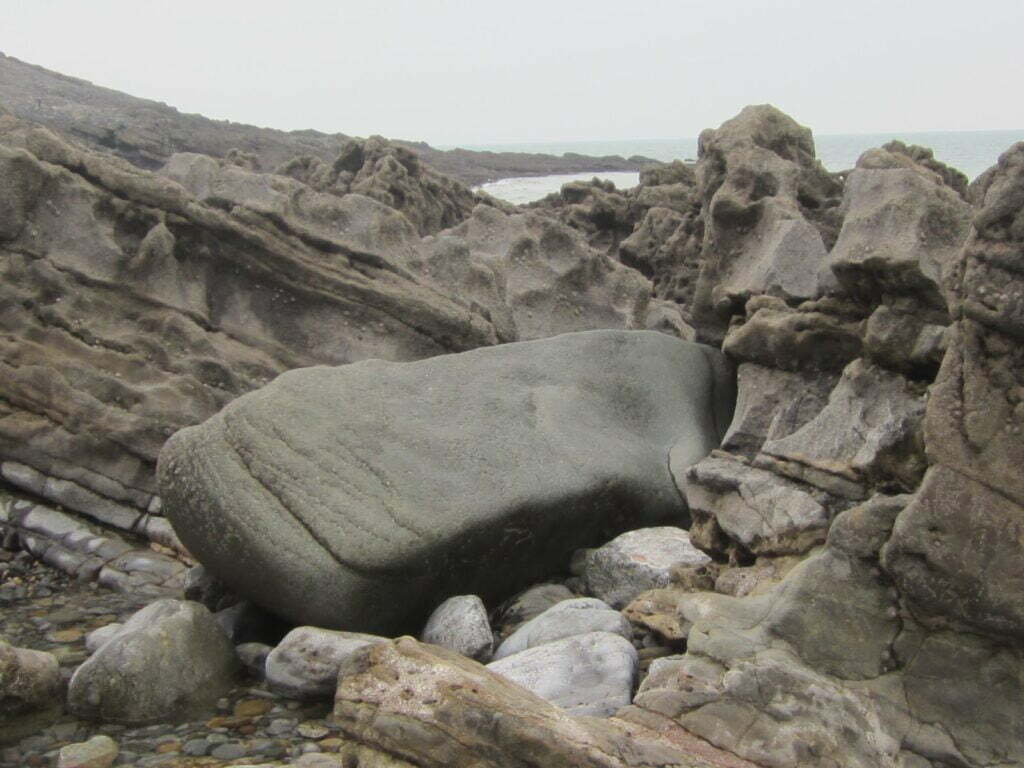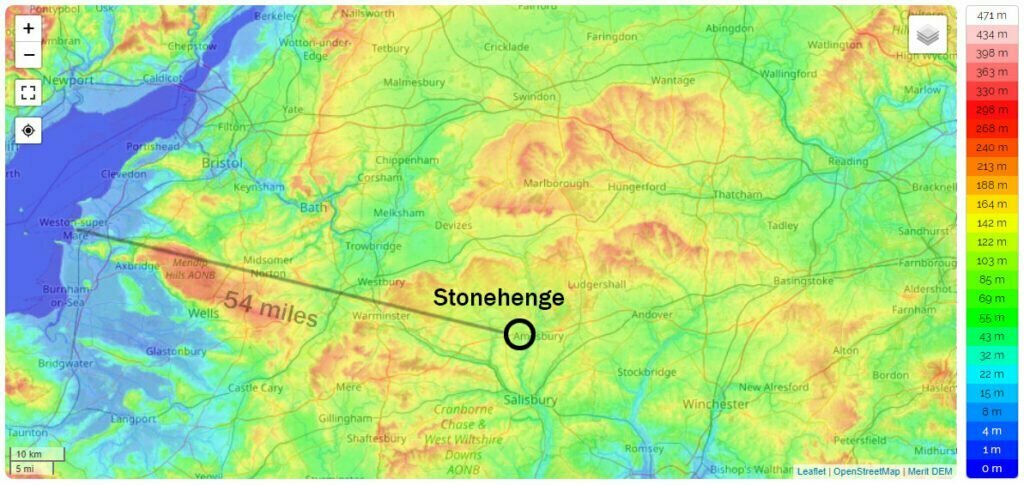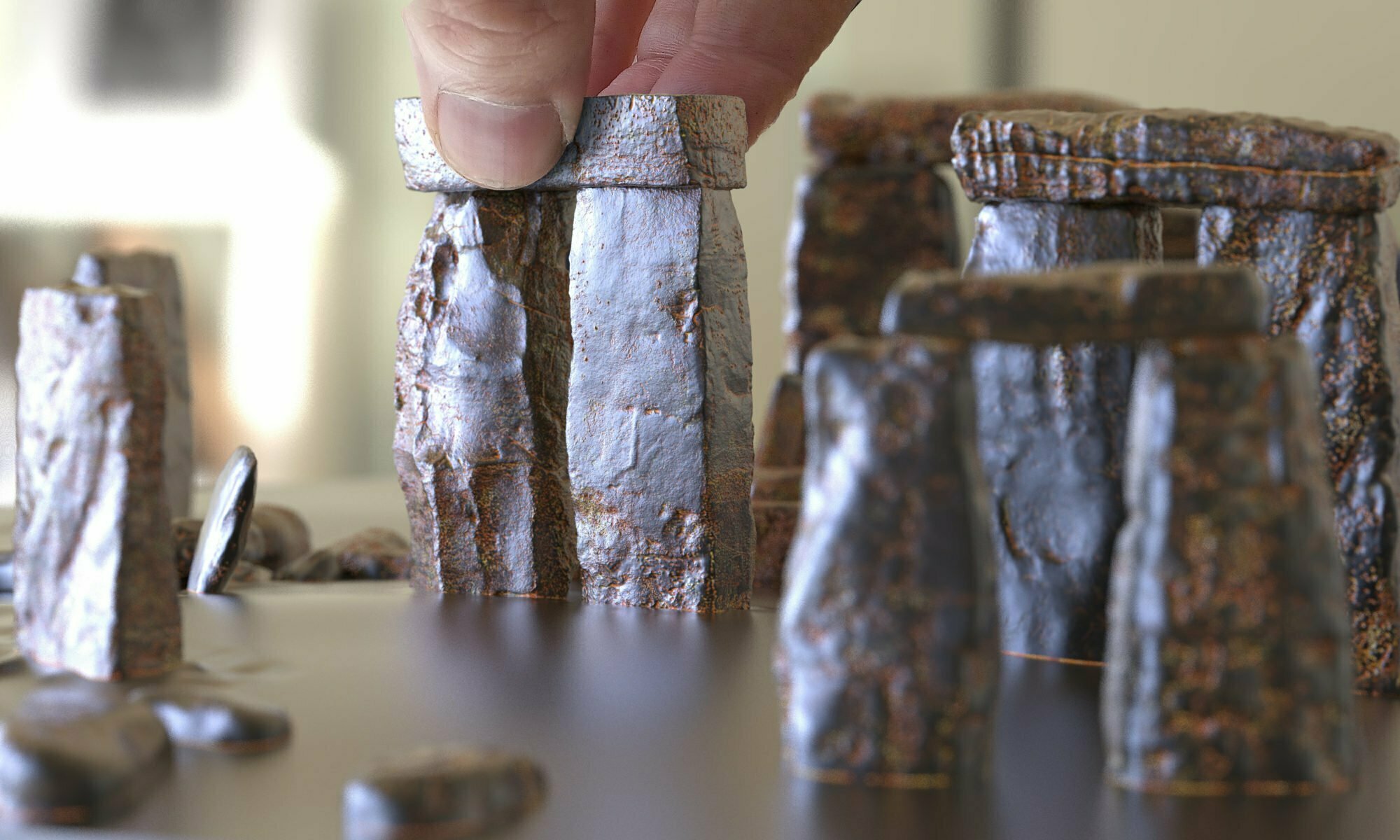Recently, tenacious Brian John, researched this bluestone found on a beach by Phil Holden, a photographer, in Mumbles, near Swansea, South Wales. It is just one of several that make up a breadcrumb trail of the ice floes from the west of Wales, North Wales, even Scotland. Which, probably, reached as far or even further than the nascent site of Stonehenge.

Of course, some of Stonehenge’s bluestones could have swept from North Wales, directly through Abergavenny, from Scotland through Gloucester. All things are possible with mother nature when she has eons of time.
But, one thing is certain, now that these coastal erratics have been found and once they’ve been identified as being brothers and sisters of the bluestones at Stonehenge, or at least the debitage, there. That the human transport theory: with the quarrying, by man, the erection of a protohenge, it’s dismantling, the bring a stone unification hypothesis, the isotope analysis linking to west Wales of the cremated found at Stonehenge… The routes to pull a ton of rock 135 miles to The River Severn… All this twisted and bent science can be put into the waste bin of history.
They will, one day, gather themselves together on their own Wikipedia page just like the Runamo Runes, which went on for 600 years.
The upcoming British Museum exhibition will be full of the fairytale of protohenge. Very likely without reference nor mention of the iceberg that will sink this Titanic. And at last, it will. And we’ll be asking the better, more correct questions.
- What ‘the builders’ thought of glacial erratics scattered in Somerset or Wiltshire. They’d have known they were not local. How else would these huge foreigners be here other than giants or gods?
- Where did they find them. Were they scattered over miles or tumbled together in a pile?
- How far did they ‘human transport’ them. Were they close by, even on the spot. Were they closer to the coast?



